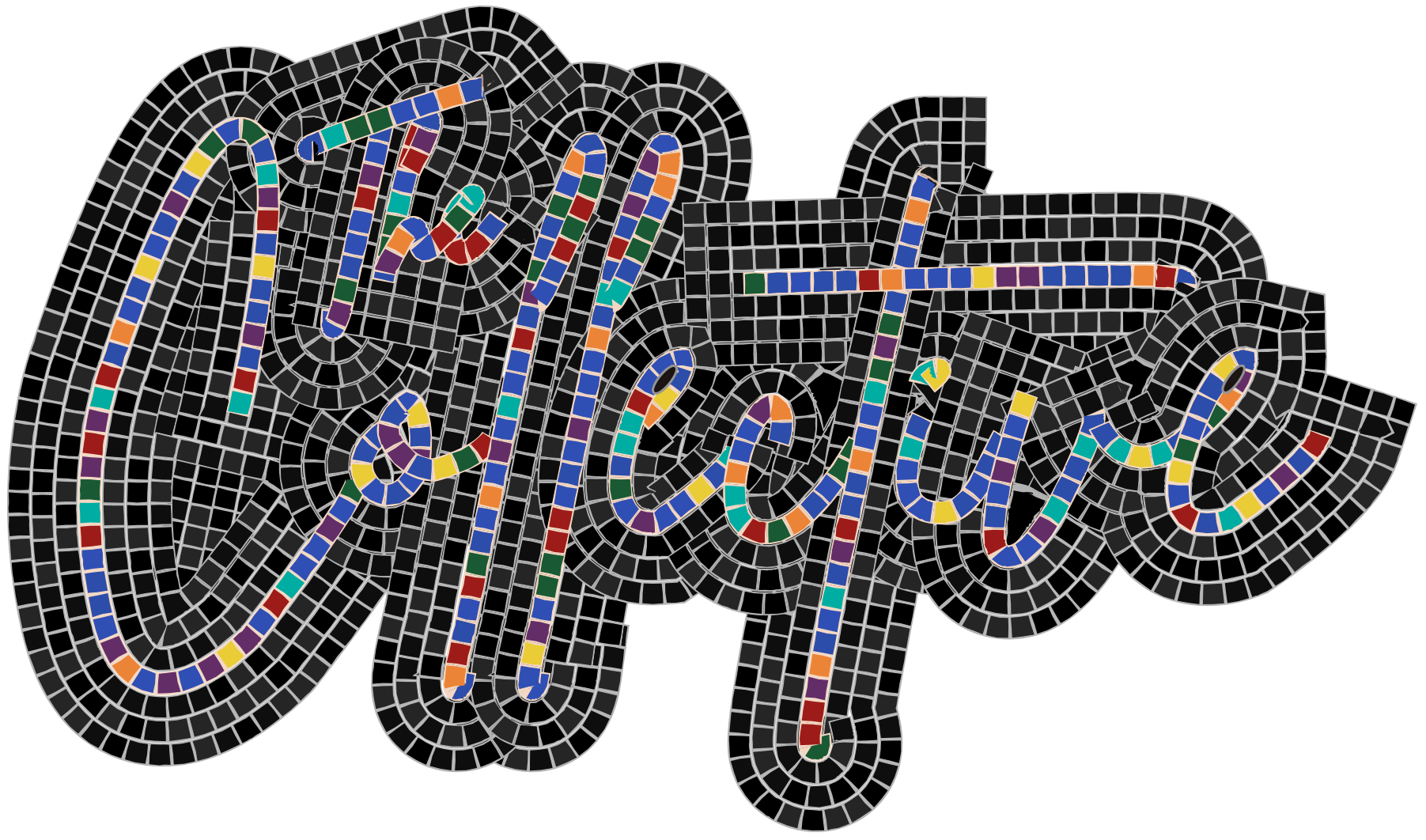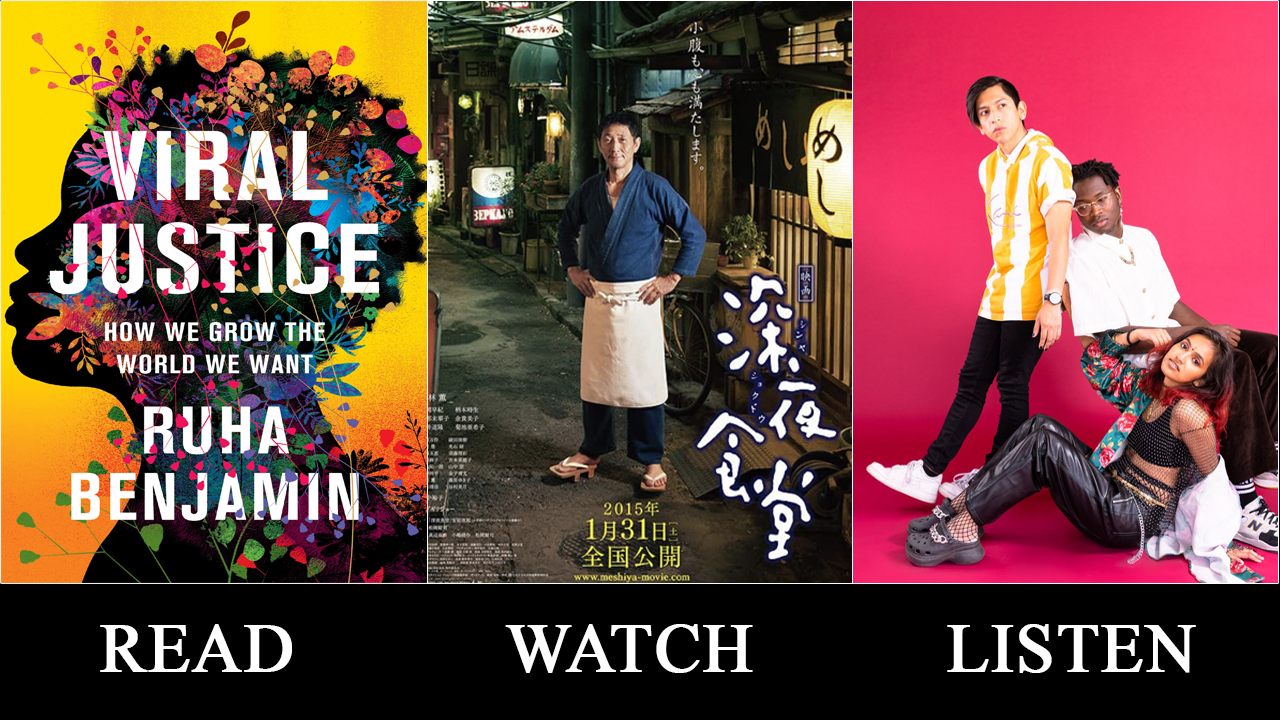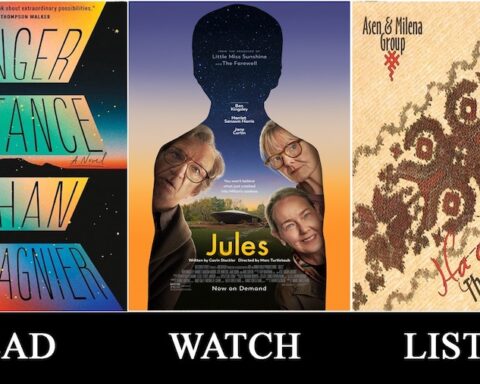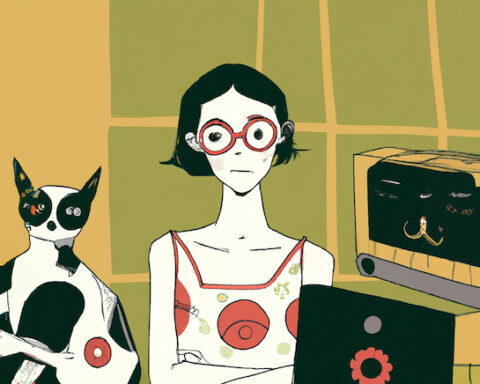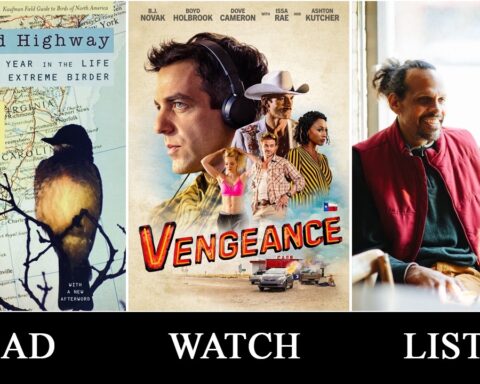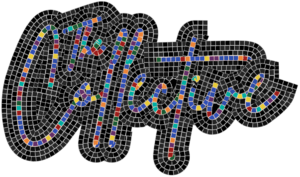. . . we owe it to ourselves to name the world we cannot live without, even as we diagnose the world we cannot live within. Let us excavate, name, and water all the forms of justice and solidarity blooming in the rubble. . .
Ruha Benjamin, Viral Justice
This issue is about shifts. Shifting how we think, act, make art, view the world, and show up in the various spaces in our lives. Butting up against how our world has been designed, defined, how we’ve been made blind to other options and shifting into new, alternative realities. Rejecting, undefining, redefining, reworlding, and shifting in a multitude of ways, step by step.
Defining is a power move — the audacity to say what things are and, by extension, what they are not. In one sense, to define something is to put it in a box — an act of codification, limitation, restriction, of forcing exceptions into the margins. In another sense, to define something is to make way for liberation — an act of empowerment, a reclamation of identities and presentations, a creation of space, a striking down of the notion that the right to define our own realities is anyone’s but ours. In yet another sense, to define something is itself an epistemologically and ethically and politically troubling act. Aren’t there — can’t there be — ways of knowing and being and communicating not predicated on definiteness? Maybe we’re better off redefining (re)definition itself — definition as not finite and exclusionary but expansive, fluid, overlapping. Sharp enough to be wielded as tools for social justice and change but soft enough to sink into in times of rest and exploration. We’re interested in radical redefinition and in (re)definition itself as radically recursive, discursive, human, shifting. Shifts upon shifts upon shifts.
As you’ll see, the articles in this anniversary issue celebrate a multitude of ways in which we can shift, and the multiplicity of effects that brings — that if we are open to shifting, we can open whole new realities. This Editors’ Corner offers three works that shifted our thinking, that advocate for shifting and for critical redefinition. And it’s an interesting moment for us as a collective — The Collective — as we shift into this second year of existence, celebrating the warmth, excitement, and growth we’ve experienced together over the last year and forging onward into the continued reworlding that lies ahead. In fact, you’ll notice a shift to a new tagline — “A mosaic of alternative voices, a movement of artistic conscience” — and to a variety of new ways to connect our community, from newsletters to virtual gatherings to issue soundtracks.
We hope you enjoy shifting with us through this Corner, the articles in this issue, and the exciting changes ahead. Join the conversation. Be part of the reworlding.
READ
Ruha Benjamin — Viral Justice: How We Grow the World We Want (October 2022)
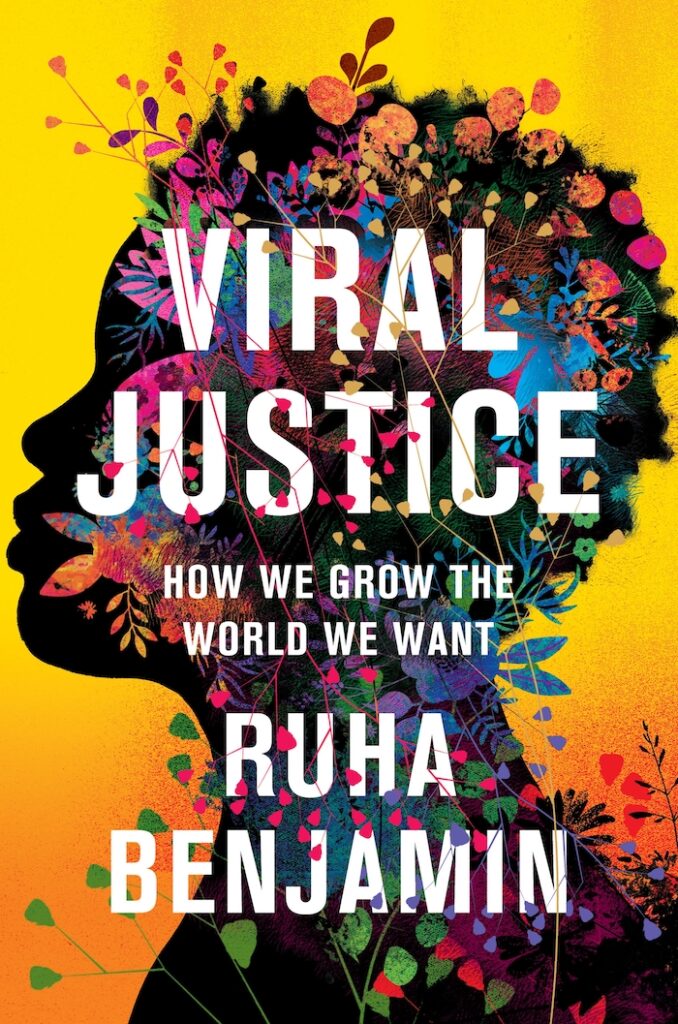
For the first anniversary of The Collective, as we continue to work toward “grow[ing] the world we want,” we were excited to discover that Ruha Benjamin’s Viral Justice was being released on October 11. Benjamin, award-winning author and professor of African American Studies at Princeton University, has written an all-encompassing, heavily-researched, nuanced, inclusive, and critical book that not only informs readers of entire histories of systemic and racial injustices and inequities, but also provides a tangible framework so that we may all act to “build a more just world – one small change at a time” — a viral justice. In the wake of the pandemic, Benjamin discusses the interconnectedness of all society’s ills and the toll these injustices take not only on minorities but on all people. She uses an abundance of studies, deeply human chronicles, the work of numerous scholars, words from the rich canon of Black writers and thinkers, and her own personal experiences to draw threads between everything, including the health care system, police brutality, the lies of meritocracy, and the weathering on our physical bodies. Benjamin entreats us to make daily changes that can inspire, uplift, and collectively transform reality: “What if, instead, we reimagined virality as something we might learn from? What if the virus is not something simply to be feared and eliminated, but a microscopic model of what it could look like to spread justice and joy in small but perceptible ways? Little by little, day by day, starting in our own backyards, let’s identify our plots, get to the root of the cause of what’s ailing us, accept our interconnectedness, and finally grow the f*** up.” (p. 11)
One of Benjamin’s key tactics is an analysis of words and concepts prevalent in society. She uncovers the full nuance behind inequitable constructs by shifting perceptions and creating new, more accurate definitions. For example, in “Chapter 3: Lies,” Benjamin re-situates the word “lucky,” saying, “Not a word one hears often enough in elite spaces. Being lucky doesn’t mean you are not qualified. It just means many others could have been in your shoes but they were not chosen, and there are many more besides who might have qualified if given the same opportunities. Luckiness does not negate worthiness. It negates entitlement.” (p. 115) She goes on to say how frustrating she found the question of how STEM can better attract underrepresented populations: “ ‘Attract’ assumes Black, Latinx, and Indigenous students are not already attracted and ignores how, at every turn, they are undermined, underestimated, underresourced, and pushed out of STEM fields. ‘Attract’ reinforces ‘the myth of Black disingenuity,’ to borrow a phrase from historian Bruce Sinclair, as if Black people have not been among the more prolific innovators, of everything from traffic lights to Caller ID, despite the many obstacles in their way. The challenge is not how to attract underrepresented groups to STEM but how to stop repelling them!” (pp. 118-119) Just as with the book’s title, Benjamin shows throughout that if we examine the inherited language and concepts that color our perceptions, we can shift to a more empathetic and genuine understanding of how we might all think, communicate, and act differently to create a more just world.
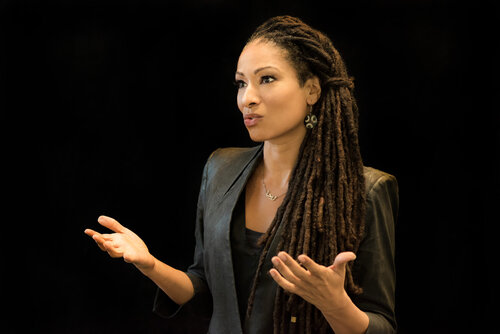
The book is incredible in scope and depth, and though the content is often heavy and sometimes horrific, there is also joy as Benjamin’s hope and belief radiate through the pages. “Viral Justice offers a vision of change that requires each of us to individually confront how we participate in unjust systems, even when ‘in theory’ we stand for justice,” (p. 16) reminding us that people make up systems and systems can harm all of us, whether we are the explicit target or not. The shift toward viral justice is both deeply personal — requiring us to “[reckon] privately with how we create distinctions between those who have ‘earned’ our respect and sympathy, and those we feel justified to dismiss and deride because they have been cast out of the category ‘human’” (p. 69) — and inherently artistic — “Beauty is not frivolity, a luxury, nor should it be an afterthought. Even under the harshest conditions, we hunger not only for food but also for beauty and meaning. . . which is why art, aesthetics, and imagination are vital to world-building.” (p. 55) Benjamin is also careful to distinguish personal from independent, rooting viral justice in radical interdependence and human plurality “not as some cheery platitude but as guiding ethos for regenerating life on this planet” (p. 9), and rejecting what she calls “corrosive individualism” (p. 51) and “pathological self-interest that masquerades as independence” (p. 11). Citing Chile’s political overhaul following mass Indigenous-led social/environmental protests, Benjamin writes: “This is world-building on a grand scale with local communities and Indigenous values guiding the process. It is a process of rewordling that doesn’t try to smother differences, one that envisions a ‘pluriverse’ rather than a universe, welcoming heterogeneity rather than enforcing a singularity.” (p. 10)
In short, this book is, for us, the epitome of what an academic treatise can be: fact-based, persuasive, open-minded, empathetic, and public-facing.

WATCH
Yarō Abe — Midnight Diner (2009-2014)
If you’re a Netflix subscriber, maybe you’ve seen Midnight Diner roll by on your streaming screen. And maybe you, like me, have been intrigued but confused. Is it Midnight Diner? Midnight Diner: Tokyo Stories? What about the remake with that other guy? That movie with the original guy? Here’s the thing — there is an original anthology show, it is on Netflix, it’s not called Tokyo Stories, and it’s rad, totally worth the hype. The original three seasons (ten episodes each) of Midnight Diner — Shinya shokudō, in Japanese — are adapted from a manga of the same name by Yarō Abe, originally aired on Mainichi Broadcasting System from 2009 to 2014 and later taken up by Netflix. Though my knowledge of Japanese culture is limited, so certainly my viewing of this show lacks certain nuances, I appreciate Midnight Diner as a beautiful, funny, captivating, and soothing meditation on the intimate everydayness of our lives and the interdependence (to recall Benjamin) that shapes our realities.
The show is set in Shinjuku, a major commercial center in Tokyo, in a diner open only from midnight to seven o’clock in the morning and run by a scar-faced chef known only as “Master,” who simply facilitates the interaction of his various customers and makes whatever dishes they request.
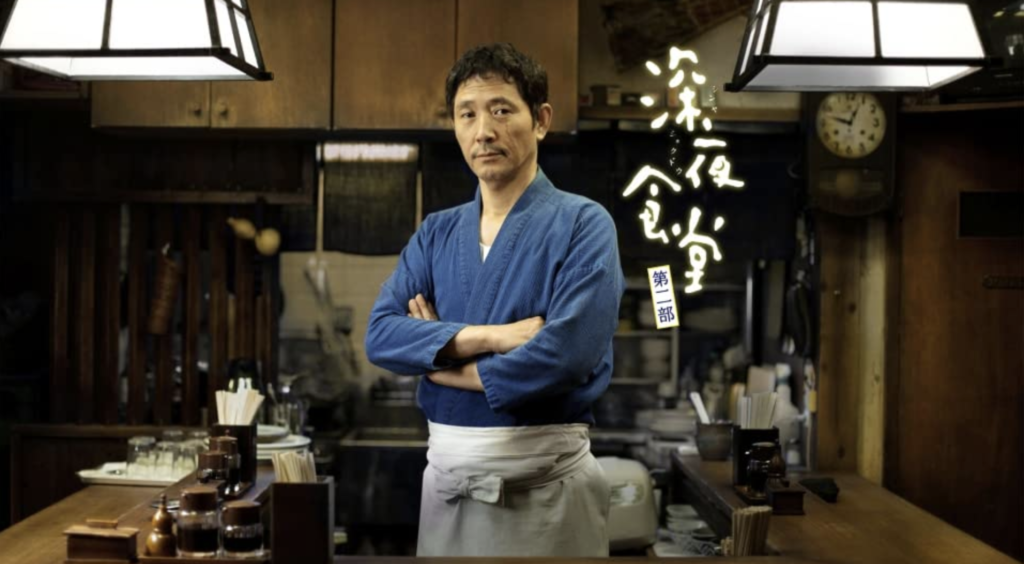
Each episode opens with the same script (voiced by Master):
When people finish their day and hurry home, my day starts. My diner is open from midnight to seven in the morning. They call it “Midnight Diner.” [cut to menu listing “pork miso soup combo, beer, sake, shochu”] That’s all I have on my menu. But I make whatever customers request as long as I have the ingredients for it. That’s my policy. Do I even have customers? More than you would expect.
And those customers are wildly diverse — manga artists, businesspeople, chefs and foodies, porn stars, taxi drivers, trans folk, mob bosses, karaoke enthusiasts, elderly folks, and so many more, many from the underbelly of society. Each episode sees one or several of these individuals work through something in their lives — from friendly quarrels, crushes, and breakups to major professional scuffles, burden-laden family histories, and serious transgressions — all centered around a particular dish made by Master. And although characters’ lives often do link in poignant ways, they each arrive at critical insights without being tethered to a story arc or larger moral message. Whatever arc there is plays out in surprising ways, more rhizomatic (to pull in a hot academic term) than linear (and sometimes hardly even that).
The beauty of the show, for me, is that it isn’t about anything. It’s liberating, in a way, to not have an agenda forced upon you as a viewer or expectations laid out before you that must be met. I think we tend not to think about artistic consumption that way, at least in mainstream or academic spaces. We want an objective, an outcome, a standard, a takeaway. But to simply have the space to watch feel this show unfold is meditative, and the takeaways, then, can be more experiential, more processual, more about space-making and time-taking than about a prescribed, singular notion of what we gain from making space and taking time.
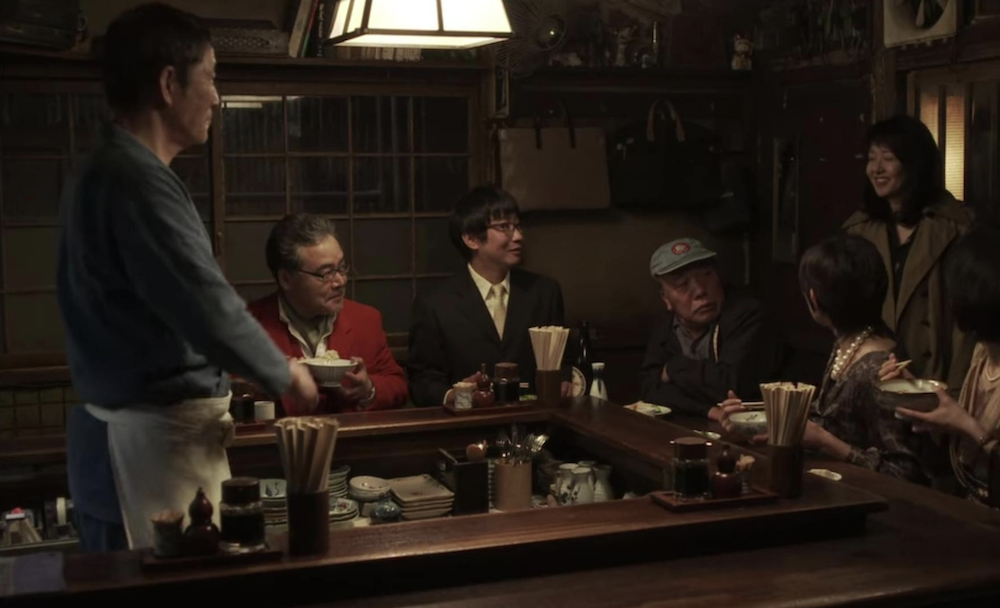
The show takes everything as quotidian and the quotidian as everything. Everything matters. Micro and macro (to again recall Benjamin) are tossed together in a way that proves the impotence and mistruths of those very categories in representing their inextricability within our realities. Our world is “designed” (Benjamin again) so programmatically — everything has a purpose, a place, a function — but there is a purposelessness to Midnight Diner, an objectivelessness, so that it’s about nothing at all just as much as it’s about chance encounters and entanglements on all levels, how people grow and exist together in meaningful ways that aren’t otherwise socially sanctified.
If we think about what it is that makes something like Midnight Diner so moving, so effective, such a microcosm of reworlding, then we can start to think differently about the spaces we inhabit, how we inhabit them, and whether or not we are aware of the spaces in between, the alternative spaces, the spaces that don’t yet exist. We can ask ourselves: are we moving in a safe stupor through our world and its prescriptions, or are we staying awake (perhaps past midnight?) to our own humanity, to each other, to welcoming the shifts that may arise when we need them the most?
As my husband said the other night, “No show makes me want to be more human than Midnight Diner.”

LISTEN
Pinkshift — Love Me Forever (2022), and other gems

Speaking of my husband, I’m often thankful for his habit of subjecting himself to the algorithmic whims of Spotify’s alt-pop-punk netherworld, especially when it brings us breakout gems like Pinkshift. We were both immediately hooked by the trio’s hybrid pretty-pop-punk, quasi-metal, Evanescence-meets-Paramore-meets-MCR, astonishing anime-theme-song energy (yes, really), and I was stoked to learn that their debut album, Love Me Forever, would release on October 21 this year — perfect timing to immerse myself in their songs leading up to our anniversary issue.
Ashrita Kumar, Myron Houngbedji, and Paul Vallejo banded together in 2018 at Johns Hopkins University in Baltimore and broke into the pop-punk scene after their pandemic-release single i’m gonna tell my therapist on you went viral. During their genesis, as the group explains in an interview with NME, they declined acceptances to med school to focus full-time on music — turned off by academia’s stiff, “cut-throat” culture, they shifted instead to “create a world and a community” around their art, foregrounding authenticity and generosity of self while redefining success for themselves and their families (specifically their immigrant parents).

Pinkshift traverses musical genres and styles with casual virtuosity and irreverent drive, pushing punk’s needle toward genrelessness, and I love how their album encapsulates shifting on a variety of musical levels, from their facility with thoughtful, unconventional inter-track transitions to their surprisingly crunchy chromaticisms and generally haphazard text placement. Their lyrics bridge classic teen punk angst and pointed social critique (something that good punk does well and Pinkshift punk does even better). Several of the album’s tracks capture the particular challenge that is coming of age amidst today’s unique cocktail of unthinkable social ills. “the kids aren’t alright” reveals the mental disarray wrought by the various pressures of social media, fake news, and, well, capitalism on today’s younger generation(s); “BURN THE WITCH” juxtaposes seventeenth century and present day micro-rhetoric to call out society’s perpetual refusal to believe women; and Kumar’s stunning ballad “in a breath” (performed solo vocals and piano) is a poetic effusion on what it feels like to live, breathe, and try to survive in a tired, lonely, and alienated body. This piano-and-vocals-only track also includes my favorite lines on the album: “Nobody told me how to live // Here and die on my own” — evoking for me (yet again) Benjamin’s interdependence and critique of useless hyper individualism — and all of verse 2:
Sometimes I dream a perfect dream Where I return Back to a place Where I was born in the gardеn of a soul In the garden I was born What is it like whеn you can sleep with no alarm? What would I be if I could lay down and rest my eyes I wonder shyly how to breathe Cause I don't know
Naming such visceral, existential pleasures as wondering how to breathe and returning to a garden origin, and framing them in gentle what-ifs, invites listeners to wonder alongside Kumar and to, perhaps, make space for these considerations in our own tired bodies.
It’s not just Pinkshift’s own releases that offer cutting critique. The group appears on glass beach’s 2021 remix album “alchemist rats beg bashful” in a total punk-march BOP called “bathroom community,” a satirical miswording of “bedroom community” and succinct takedown of capitalism, suburban culture, the military, sexism, and monetization of human (read: women’s) emotions. (The transition between second and third verse, “But Satan waits upstairs,” will probably never NOT give me chills.)
Here it is again, a heart of excitement In the form of a girl who hates her life As she sits alone on the floor of her bedroom Waiting for answers, wasting time Here it is again, the son of a soldier Remington shotgun, rolled up sleeves To keep Satan out of the walls of the suburbs His last bastion of modernity But Satan waits upstairs, watching over his daughter She writes emo songs, she's so depressed Her lyrics are naive but she still sings her heart out The only way she knows how to confess And as she gets up to shut the bedroom door behind her He stands right beside her, she's trying to get her head on straight With box dye hair to match her black thigh highs And scratched nail polish, she performs femininity She laughs so hard, I watch her lose her balance Fall over backwards to the arms of Mephistopheles But she'll never leave her bedroom in this bedroom community
Pinkshift’s mission and music speak to issues we at The Collective want to dig into (and that get highlighted in this issue), not only in their potently critical lyrical content, but in their genre-bending bent and community orientation. Also, their music is fun as hell. Check ’em out.

At The Collective, we aim to do something like what Ruha Benjamin describes — to allow one another to start where we are, collectively and individually. To chip away in our own plot(s) at our own pace(s). To dig into this “process of rewordling” wherever we happen to be. To rethink, redefine within ourselves and together.
In building a community space from the ground up, our very roots acknowledge our inherent interdependence, the fact that no one can (or should) reworld alone and that if we reworld together, we can at least have a shot at making what Benjamin calls “a world where many worlds fit” and where the underrepresented thought leads the charge for change. Though our approaches, interests, and “areas of expertise” are diverse, and our social/disciplinary/institutional spheres may have not yet overlapped (or may even be pitted against one another in perplexing ways), we are together in our sheer shared desire for things to be better, our aim to do better by one another. If we’re all here for reworlding, our points of entry aren’t barriers to connection, but rather critical talking points for exploring our interdependence on the move to a new just reality.
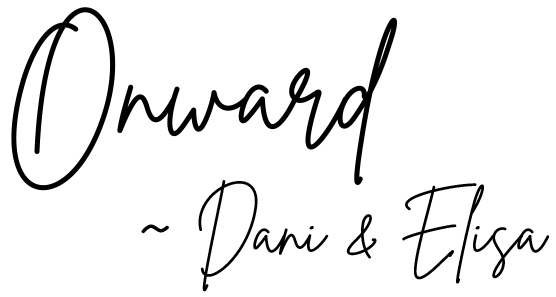
Articles in this issue:
- Featured Article: Politics Block party for Asian America by Lei X Ouyang
- Bridges Mischief, mistakes, and pure emotion: An interview with Tina Gutierrez by Editors
- Diversity Composing les femmes by Kä Neunhoffer
- Learning Knock knock Netflix by Azlan Smith
- Materials Decolonizing myself, The Jungle Book, and Rudy, too by Vijay M. Rajan
- Movement How do you (re)define success? by Molly O’Roark
- Performing In a new, old-fashioned way: Classical Revolution and (non)traditional concert presentations by Isaac Brinberg
- Nugget Fall 2022: Shifting standpoints by Contributing Writers
